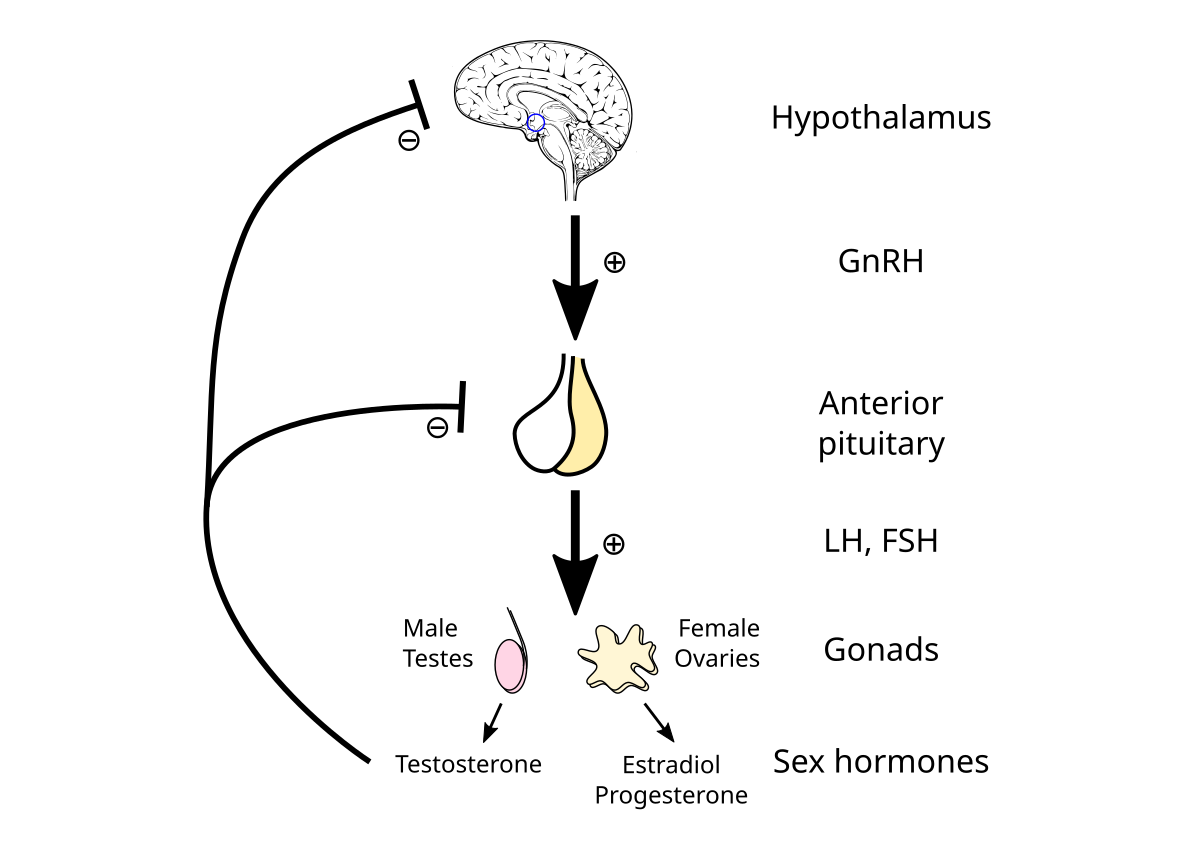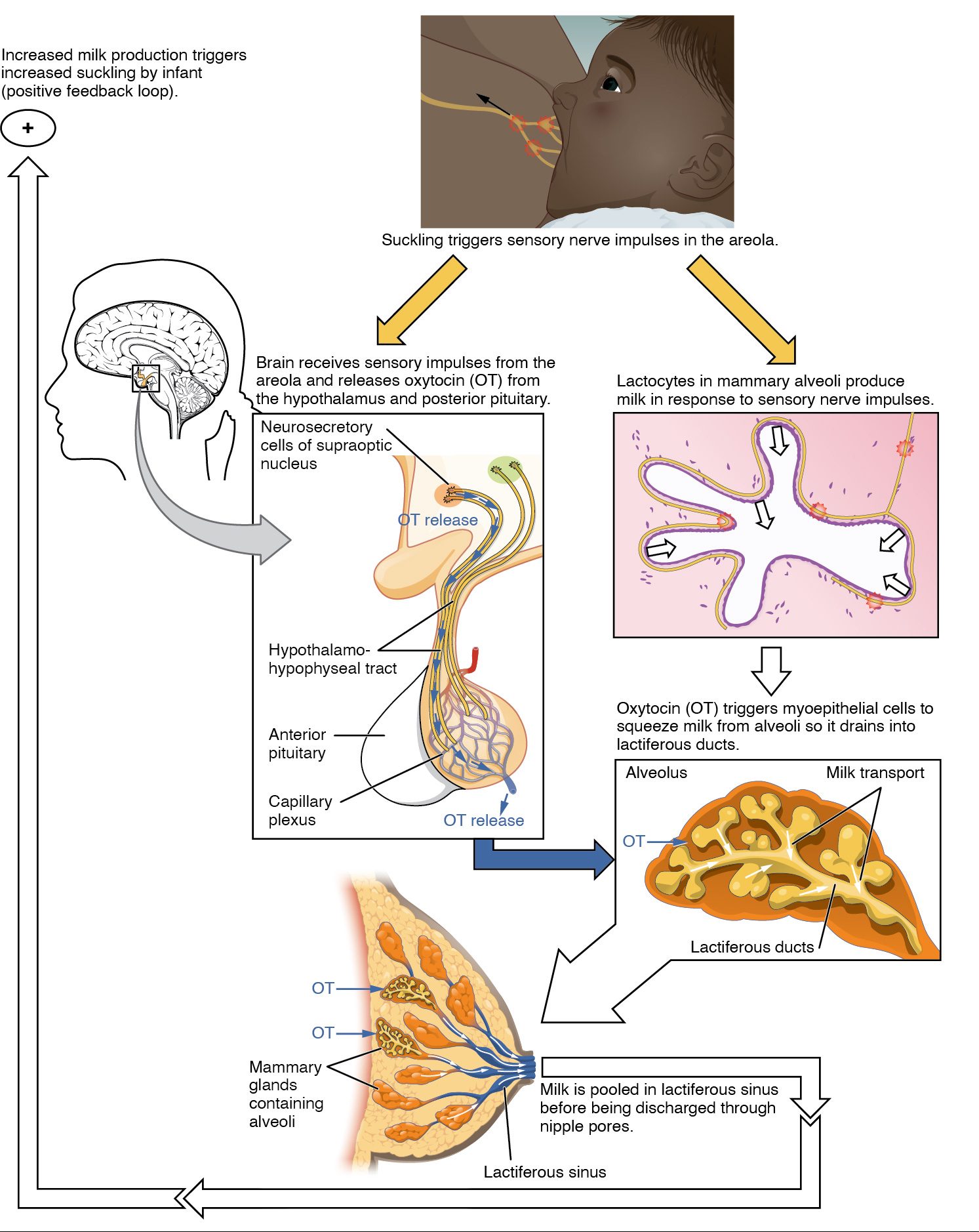Female Endocrinology
Hormonal Control of Reproductive Systems
Hormones are chemical substances secreted by cells within an organ, released directly to circulation and acting on a distant target (cells/organs). The human male and female reproductive cycles are controlled by the interaction of hormones from the hypothalamus and anterior pituitary with hormones from the reproductive tissues and organs of each sex. In both sexes, the hypothalamus monitors and causes the release of hormones from the pituitary gland.
When the reproductive hormone is required, the hypothalamus sends a gonadotropin-releasing hormone (GnRH) to the anterior pituitary. GnRH causes the release of follicle stimulating hormone (FSH) and luteinizing hormone (LH) from the anterior pituitary into the blood and stimulates gonadal function. Note that the body must reach puberty for the adrenal glands to release the sex hormones that must be present for GnRH to be produced. Although FSH and LH are named after their functions in female reproduction, they are produced in both sexes and play important roles in controlling reproduction.

Other hormones released from the pituitary gland also have specific functions in the male and female reproductive systems. Prolactin hormones released from the anterior pituitary are used to measure sexual satisfaction in both sexes, with its main function focusing on mammary glands during pregnancy and lactation. Prolactin stimulates mammary gland development and milk production. Oxytocin hormones are released from the posterior pituitary and stimulate the smooth muscle contraction of reproductive organs.

Take Home Message
- Adrenal gland function at puberty stimulates the hypothalamus to produce GnRH.
- GnRH released from the hypothalamus stimulates pituitary glands to produce FSH and LH, hormones that work on the Gonads.
- Prolactin and Oxytocin released by pituitary glands have an influence on the reproductive organs.
Image Sources
- Figure 1. “Relationship between hypothalamus, pituitary hormones, and gonads” is from Artoria via Wikimedia Commons, licensed CC BY 3.0.
- Figure 2. “Let-Down Reflex” is from OpenStax Anatomy & Physiology 2E, licensed CC BY 4.0. Access for free at OpenStax Anatomy and Physiology 2E online.

